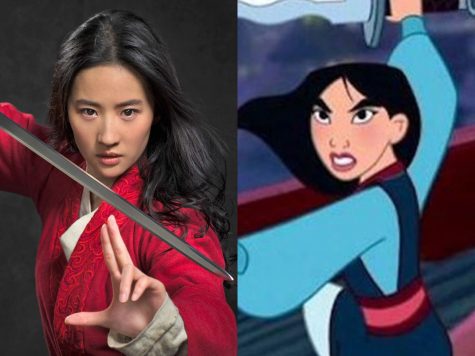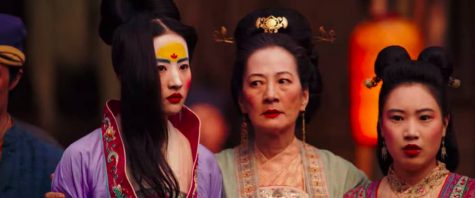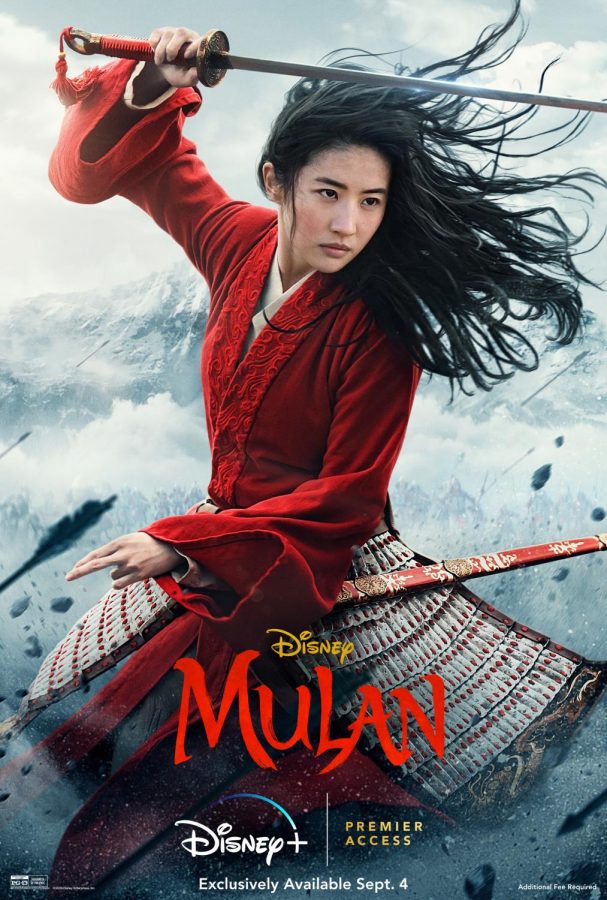Review: Disney+’s Mulan Offers a New Princess for a New Generation
Mulan Disney Plus
On September 4th, Disney Plus, the on-demand streaming platform for entertainment giant Disney, released its long-anticipated live-action remake of Mulan. Traditionally, Disney movies have featured princesses waiting for a male savior. The new live-action Mulan upends the traditional narrative with an action-driven plot featuring feminine strength and independence.
For the uninitiated, the story of Mulan follows a young woman who has taken the place of her elderly father in a war to defend her homeland in China. As the story unfolds, this new Mulan blazes a path of independence. While training in the army, she conceals her identity by dressing as a young male soldier. When she is discovered, her fellow soldiers abandon her, but she succeeds in defeating the invaders almost single-handedly. When Mulan returns home triumphant, bearing a gleaming sword that is a present from the emperor for her bravery and loyalty to the empire, she encounters her love interest, General Li Shang, who requests she remain with him, which would require being away from her family. Instead of the expected happily-ever-after kiss, Mulan holds his hand and says her goodbyes.
A Different Vision for a New Generation
In forgoing the fairytale ending, the new Mulan offers audiences a very different vision of female independence, one without romantic fulfillment. Even for the most devoted Disney fan, this was a welcome turn.

A Complicated Response
The original animated version, a lighthearted musical comedy, lacked the seriousness and strength of the new remake projects. The animated original almost downplays Mulan’s efforts and sacrifice. But Westridge ninth-grader Kiera S. did not agree. “I think the movie needed some comic relief,” she said. “It has a powerful message, but some comedy would have made the characters more relatable and in turn would have gotten viewers to really take the theme to heart.”
For many students at Westridge, Mulan’s commitment to improving and protecting a world that doesn’t always support or protect her feels relevant to girls and young women in the 21st century. Shania W. ’27 felt that the new Mulan was much better than the original animated version. “It makes more of an impact than the cartoon original because instead of just saving a man she is affectionate towards, she saves her entire country.”

Complicating matters further is that the cast of the live-action Mulan was entirely Asian, but behind the camera there was no diversity, which many news outlets pointed out, including The New York Times and Vanity Fair. “There should have been a primarily Chinese staff or at least director,” Shania said. The New Zealand director Niki Caro, most known for her work on the movie Whale Rider, was, many felt, not the correct person for the job. “I mean, how can you direct a movie on a subject if you can’t experience it in a way that will lend perspective?”
Despite different views on the movie in general, there was one common agreement among these Westridge students: the location in which the movie was filmed was inappropriate and distasteful. The movie was filmed in Xinjiang province, where Uighur Muslims are being detained in concentration camps.
In the final credits of the movie, Disney personally thanked the governing groups of Xinjiang, completely ignoring the horrors that Muslims are being subjected to there. This Chinese violation of human rights should not go unnoticed. “I felt kind of offended in a way, but I guess there was nothing I could do about it,” said Shania.

Disney deserves harsh criticism for this oversight. Although the movie is an amazing depiction of feminism, the production should have made a greater attempt to include Chinese culture on and off set. A movie is not only defined by its on-screen portrayal, but also by the people behind the camera and how they represent and add to the film.

















![Dr. Zanita Kelly, Director of Lower and Middle School, pictured above, and the rest of Westridge Administration were instrumental to providing Westridge faculty and staff the support they needed after the Eaton fire. "[Teachers] are part of the community," said Dr. Kelly. "Just like our families and students."](https://westridgespyglass.org/wp-content/uploads/2025/03/dr.-kellyyy-1-e1748143600809.png)















































John Wallace • Nov 3, 2020 at 2:31 pm
Fantastic story! Great writer!